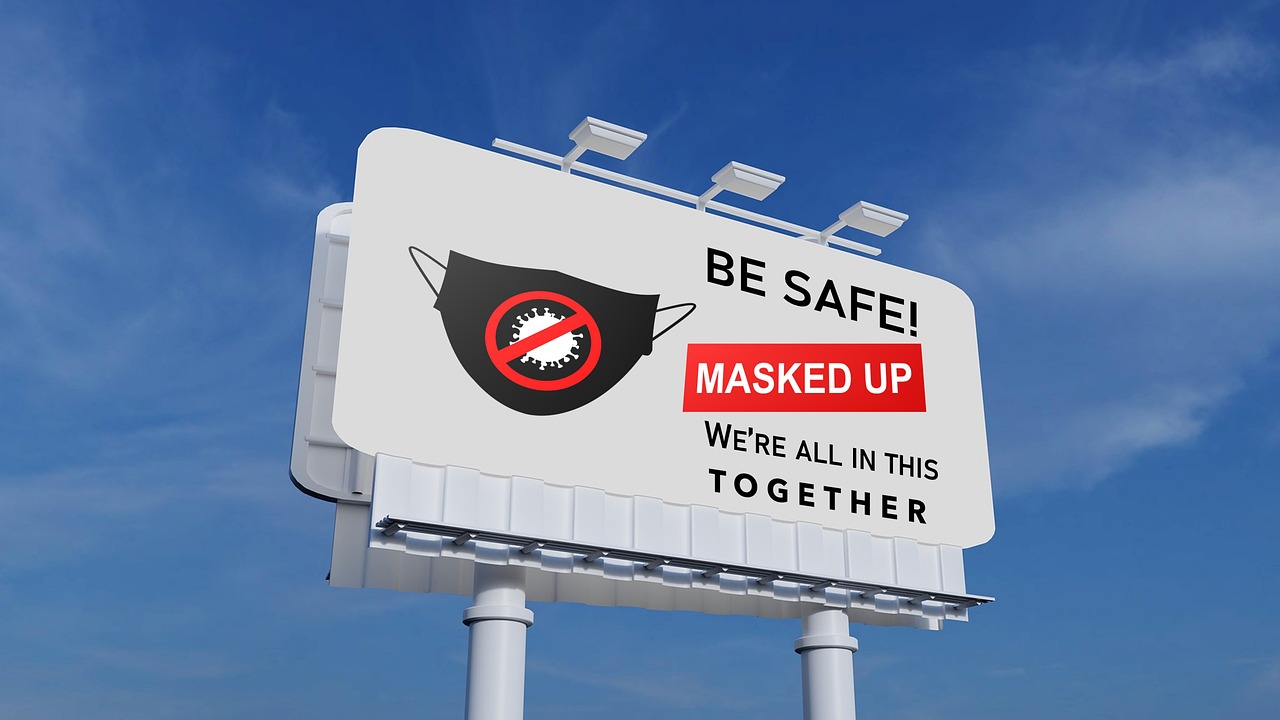Understand Human Behavior for Better Safety at Workplace
In today's fast-paced work environment, understanding human behavior is more crucial than ever for ensuring safety. It's not just about having rules and regulations in place; it's about understanding the psychological factors that drive employee behavior. When organizations grasp the nuances of how people think and act, they can create strategies that resonate more deeply with their workforce. This approach leads to a safer work environment where employees feel empowered and engaged in safety practices.
Imagine a workplace where safety is not just a checkbox on a list but a shared value among all employees. This transformation begins with recognizing that human behavior is complex and often influenced by various factors, including past experiences, social dynamics, and organizational culture. By delving into these elements, companies can better tailor their safety protocols to align with how people naturally operate, thereby enhancing compliance and reducing accidents.
Moreover, the connection between human behavior and safety isn't merely theoretical—it's practical. When employees understand the reasons behind safety measures, they are more likely to embrace them. It’s like teaching a child to look both ways before crossing the street; if they understand the potential dangers, they are more likely to remember to do it. This article will explore the intricate relationship between human behavior and workplace safety, providing insights that can lead to a more secure and productive work environment.
Understanding the psychological factors that influence safety behavior can significantly enhance an organization's ability to design effective safety protocols and training programs. Employees are influenced by various psychological elements, such as their perception of risk, motivation, and the social environment surrounding them. When these factors are taken into account, safety measures can be crafted to not only meet compliance standards but also resonate with the employees on a personal level.
Risk perception plays a crucial role in how employees respond to safety measures. Each individual assesses risks differently based on their experiences, knowledge, and the context of their work environment. For instance, a worker who has witnessed a near-miss incident might perceive a particular task as inherently riskier than someone who has not. This section will delve into how these personal assessments shape overall safety strategies and influence organizational policies.
Past experiences significantly shape an individual's perception of risk. When employees have encountered accidents or near-misses, their subsequent behavior often reflects a heightened awareness of potential dangers. This can lead to a more cautious approach, but it can also create anxiety and fear. Understanding how these past experiences affect current safety behaviors is essential for organizations aiming to foster a proactive safety culture. By acknowledging these influences, companies can provide targeted support and training that helps mitigate fears while reinforcing safe practices.
Social dynamics in the workplace can greatly impact safety behavior. Peer pressure and group norms often dictate how individuals respond to safety protocols. For example, if a team regularly disregards safety gear, an individual may feel compelled to follow suit, even if they know it's unsafe. This section will explore the importance of fostering a positive social environment where safe behaviors are encouraged and celebrated. By creating a culture that prioritizes safety, organizations can help employees feel more comfortable speaking up and adhering to safety measures.
A strong safety culture fosters accountability and proactive behavior among employees. In such an environment, safety is not just the responsibility of management; it's a shared value across all levels of the organization. Cultivating this culture requires commitment and consistent effort. Key elements necessary for building a safety culture include open communication, employee involvement, and recognition of safe behaviors. When employees feel that their voices are heard and their contributions matter, they are more likely to take ownership of safety practices.
Leadership plays a pivotal role in establishing a safety culture. When leaders model safe behavior and consistently communicate the importance of safety, it sets a tone for the entire organization. Leaders must not only enforce safety protocols but also engage with employees to reinforce safety values. This can be achieved through regular safety meetings, open-door policies, and leading by example. When leaders prioritize safety, it sends a clear message that safety is a fundamental aspect of the organization's mission.
Engaging employees in safety discussions can significantly enhance their commitment to safety practices. Involving employees in safety initiatives and decision-making processes fosters a sense of ownership and accountability. This can include soliciting feedback on safety protocols, involving them in safety committees, or even recognizing individuals who demonstrate safe behaviors. By making safety a collaborative effort, organizations can create a more engaged workforce that values and prioritizes safety.
Effective training programs are essential for improving safety behavior. Tailored training that addresses specific behavioral challenges in the workplace can lead to better understanding and compliance. For instance, a training program that incorporates real-life scenarios and hands-on practice can be more impactful than a traditional lecture-based approach. This section will delve into the importance of designing training that resonates with employees, ensuring they grasp not only the 'how' but also the 'why' behind safety protocols.
Behavior-based safety training focuses on modifying employee behavior through observation and feedback. This approach emphasizes the importance of recognizing and rewarding safe behaviors while providing constructive feedback on unsafe practices. By creating a system where employees are actively involved in monitoring and improving safety behaviors, organizations can foster a culture of continuous improvement. This subheading will explore the effectiveness of behavior-based safety training and practical strategies for implementation.
Creating a culture of continuous learning enhances safety outcomes. Organizations should encourage ongoing education and feedback loops to maintain high safety standards. Regular training refreshers, safety audits, and employee feedback sessions can help identify areas for improvement and reinforce the importance of safety. This section will discuss how fostering a mindset of continuous learning can lead to sustained safety improvements and a more resilient workforce.
- Why is understanding human behavior important for workplace safety?
Understanding human behavior helps organizations tailor safety measures that resonate with employees, leading to better compliance and a safer environment. - How can past experiences influence an employee's perception of risk?
Employees who have witnessed or experienced accidents may perceive similar situations as riskier, affecting their behavior and adherence to safety protocols. - What role does leadership play in creating a safety culture?
Leaders set the tone for safety culture by modeling safe behaviors and engaging employees in safety discussions, thus reinforcing safety as a core value.

The Psychology of Safety
When we talk about workplace safety, it’s easy to focus solely on the physical aspects—like equipment, protocols, and emergency exits. However, the psychology of safety plays a pivotal role that is often overlooked. Understanding the psychological factors that influence safety behavior can help organizations design better safety protocols and training programs that align with employees' natural tendencies. It's like trying to navigate a maze; if you don’t understand the layout, you’re likely to get lost. By knowing how employees think and feel about safety, companies can create environments where safety is a shared responsibility.
One of the most crucial elements of this psychology is the concept of risk perception. How do employees assess risks in their daily tasks? This perception is shaped by various factors, including personal experiences, social influences, and even organizational culture. For instance, if an employee has previously witnessed a workplace accident, their perception of risk may be heightened, leading to more cautious behavior. Conversely, if they’ve never experienced a safety incident, they might underestimate the dangers involved. This inconsistency can create challenges in implementing effective safety measures. Understanding these nuances allows organizations to tailor their safety messages to resonate with employees on a personal level.
Moreover, the workplace is a social environment where peer dynamics can significantly influence behavior. Have you ever noticed how people tend to follow the crowd? In a safety context, this can be both beneficial and detrimental. On one hand, a strong culture of safety can encourage individuals to adhere to protocols. On the other hand, if the majority of employees dismiss safety rules, it can lead to a culture of complacency. This highlights the importance of fostering an environment where safety is prioritized and modeled by everyone, especially leaders. When employees see their peers actively engaging in safe practices, they are more likely to follow suit.
To effectively tap into the psychology of safety, organizations should consider implementing regular training sessions that not only focus on the technical aspects of safety but also delve into the psychological elements. For example, workshops that explore how past experiences shape risk perceptions or how social influences can be redirected to promote safety can be incredibly beneficial. By addressing these psychological factors, companies can cultivate a more aware and proactive workforce.
In summary, the psychology of safety is a multifaceted aspect that organizations must consider. By understanding how employees perceive risks and are influenced by their social environment, companies can create tailored safety programs that resonate more deeply. This approach not only enhances compliance but also fosters a culture where safety is seen as a collective responsibility, ultimately leading to a safer workplace for everyone.
- Why is understanding psychology important for workplace safety? Understanding psychology helps organizations tailor safety programs to align with how employees think and behave, leading to better compliance and a safer environment.
- How does risk perception affect safety behavior? Risk perception influences how employees assess dangers in their work environment, which can lead to either cautious or reckless behavior depending on their past experiences and social influences.
- What role do social dynamics play in workplace safety? Social dynamics can create a culture of safety or complacency. Peer behavior significantly impacts individual actions regarding safety protocols.

Risk Perception
Risk perception is a fascinating and complex aspect of human behavior that plays a pivotal role in workplace safety. It refers to how individuals assess and interpret potential hazards, and it can vary dramatically from person to person. For instance, one employee might view a particular task as a minor risk, while another sees it as a significant threat. This discrepancy can lead to inconsistent adherence to safety protocols, which is why understanding risk perception is crucial for organizations aiming to enhance their safety measures.
At its core, risk perception is influenced by a myriad of factors, including personal experiences, cultural background, and even emotional responses. Have you ever noticed how some people are more cautious than others? This could stem from previous incidents they've encountered, shaping their view of what constitutes a danger. Moreover, societal norms and peer influences can further complicate this perception. For example, if a team member frequently disregards safety protocols, others may follow suit, believing that such behavior is acceptable. This phenomenon highlights the importance of addressing not just individual perceptions, but also the collective attitudes within a workplace.
To illustrate this point, consider the following table that summarizes various factors affecting risk perception:
| Factor | Description |
|---|---|
| Personal Experience | Previous encounters with hazards can heighten or diminish perceived risks. |
| Social Influence | Peer behavior and group norms can significantly alter an individual's safety actions. |
| Cultural Background | Different cultures may have varying thresholds for what is considered risky. |
| Emotional Response | Fear or overconfidence can skew an individual's assessment of risk. |
Understanding these factors allows organizations to tailor their safety strategies effectively. For example, if a company recognizes that employees are underestimating the risks of certain tasks, they can implement targeted training to raise awareness. Additionally, fostering an environment where employees feel comfortable discussing their concerns can lead to a more accurate understanding of perceived risks across the board.
In conclusion, grasping the nuances of risk perception is essential for creating effective safety measures. By acknowledging the psychological and social influences at play, organizations can devise strategies that not only educate employees about potential hazards but also encourage a culture of safety that resonates on a personal level.
- What is risk perception? Risk perception refers to how individuals evaluate and interpret potential hazards in their environment, which can vary greatly among people.
- How does personal experience influence risk perception? Individuals who have encountered accidents or near-misses are likely to perceive similar situations as more dangerous compared to those who have not.
- Why is understanding risk perception important for workplace safety? By understanding how employees perceive risks, organizations can create tailored safety protocols and training that align with those perceptions, leading to improved compliance and safety outcomes.

Influence of Past Experiences
When it comes to workplace safety, the cannot be overstated. Each employee carries with them a unique set of memories and incidents that shape their perception of risk and safety protocols. For instance, if an employee has previously witnessed a workplace accident, their response to safety measures may be significantly affected. This reaction can manifest in various ways, such as heightened vigilance or, conversely, a sense of complacency if they believe 'it won't happen to me.'
Moreover, past experiences are akin to a mental filter through which current situations are assessed. Imagine walking into a room where a previous accident occurred; the memories of that event can trigger anxiety, leading to a more cautious approach to safety. On the flip side, if an employee has consistently experienced a safe environment, they might underestimate risks, believing that the same safety net will always be in place. This duality highlights the complexity of human behavior in relation to safety.
To illustrate this point, consider the following table that outlines how various past experiences can shape safety behaviors:
| Type of Experience | Potential Safety Behavior |
|---|---|
| Witnessed an accident | Increased caution and adherence to safety protocols |
| Consistently safe environment | Complacency and risk underestimation |
| Training incidents | Heightened awareness of potential hazards |
| Peer experiences | Influenced by group norms, either positive or negative |
Ultimately, organizations must recognize that understanding these past experiences is crucial for developing effective safety training and protocols. By acknowledging the psychological impact of former incidents, employers can tailor their safety programs to address specific fears and misconceptions that employees may have. This approach not only enhances safety compliance but also fosters a culture where employees feel more secure and supported in discussing their concerns.
In conclusion, the on workplace safety is profound. Organizations that actively engage with their employees about these experiences can create a more resilient safety culture. By fostering open communication and understanding individual backgrounds, companies can better align their safety strategies with the real-world perceptions of their workforce.
- How can past experiences affect an employee's perception of safety?
Past experiences shape how individuals perceive risks, often leading to increased caution or complacency based on their history. - What role does communication play in addressing past safety incidents?
Open communication allows employees to share their experiences, which can inform and improve safety protocols. - Can training programs help mitigate the negative effects of past experiences?
Yes, tailored training programs can address specific fears and misconceptions, enhancing overall safety awareness.

Social Influences on Behavior
When we think about workplace safety, it’s easy to focus solely on policies, procedures, and equipment. However, the social dynamics within a workplace play a pivotal role in shaping how employees perceive and respond to safety measures. Have you ever noticed how the actions of your colleagues can influence your own behavior? This phenomenon is often referred to as social influence, and it can manifest in various ways, significantly impacting safety practices.
One of the most compelling aspects of social influence is peer pressure. In a work environment, if the majority of employees neglect safety protocols, it can create an unspoken norm that discourages those who prioritize safety. Imagine a scenario where an employee sees their colleagues bypassing safety gear during a task. The individual may think, "If everyone else is doing it, maybe it's not that important." This mindset can lead to a dangerous culture where safety is compromised for the sake of fitting in.
Another crucial factor is the concept of group norms. These are the unwritten rules that dictate acceptable behavior within a group. If a workplace promotes a culture where safety is undervalued, employees might feel compelled to conform to these norms, even if they contradict their personal beliefs about safety. For instance, in a team meeting, if the discussion leans heavily towards productivity without mentioning safety concerns, employees may feel that prioritizing speed over safety is the expectation. This can create a hazardous environment where safety is seen as secondary.
Moreover, the influence of supervisors and leaders cannot be overlooked. When leaders demonstrate a commitment to safety, it sets a tone for the entire organization. Employees are more likely to adopt safe practices when they see their managers actively participating in safety training and discussions. Conversely, if leaders downplay safety issues or fail to address unsafe behaviors, it sends a message that safety is not a priority. This top-down approach is crucial in establishing a strong safety culture.
To combat these social influences, organizations can implement strategies that promote positive safety behaviors. For instance, fostering an environment where employees feel comfortable voicing safety concerns can empower them to act in the best interest of their well-being. Additionally, recognizing and rewarding safe behavior can help shift group norms towards a more safety-conscious culture. When employees see their peers being acknowledged for adhering to safety protocols, it can create a ripple effect, encouraging others to follow suit.
In conclusion, understanding the within the workplace is essential for enhancing safety practices. By addressing peer pressure, group norms, and the role of leadership, organizations can create an environment where safety is not just a policy, but a shared value. After all, a workplace that prioritizes safety is one where employees can thrive without the constant worry of preventable accidents.
- What are social influences in the workplace?
Social influences refer to the ways in which individuals' behaviors and attitudes are shaped by their interactions with others in a workplace setting. - How can peer pressure affect workplace safety?
Peer pressure can lead employees to conform to unsafe practices if they observe their colleagues neglecting safety protocols. - What role do leaders play in promoting safety?
Leaders set the tone for safety culture in an organization by modeling safe behaviors and prioritizing safety in discussions and decisions. - How can organizations encourage safe behaviors?
Organizations can encourage safe behaviors by fostering open communication about safety, recognizing safe practices, and creating a supportive environment.

Creating a Safety Culture
Creating a safety culture within an organization is not just about implementing rules and regulations; it’s about fostering an environment where safety is a shared value among all employees. This culture is the backbone of any effective safety program. When employees feel that safety is prioritized, they are more likely to engage in safe practices and report hazards without fear of repercussions. But how do we cultivate such a culture? It begins with a collective mindset that emphasizes the importance of safety at every level of the organization.
One of the key elements of a strong safety culture is accountability. Every employee, from the top management to the newest hire, should understand their role in maintaining a safe workplace. This means that safety is not just the responsibility of a designated safety officer; it is a shared responsibility. When everyone is accountable, it creates a sense of ownership over safety practices. Leaders can foster this by recognizing and rewarding safe behaviors, creating an atmosphere where employees feel valued for their contributions to safety.
Another vital aspect of a safety culture is open communication. Employees should feel comfortable discussing safety concerns without fear of judgment or retaliation. Regular safety meetings can serve as a platform for employees to voice their opinions, share experiences, and discuss potential improvements. This not only helps in identifying risks but also empowers employees to take an active role in safety. Additionally, implementing an anonymous reporting system can encourage employees to speak up about unsafe conditions or behaviors without fear.
Furthermore, training and education are essential components in creating a safety culture. Organizations must invest in comprehensive training programs that are tailored to the specific needs of their workforce. This includes not only initial training but also ongoing education to keep safety at the forefront of employees' minds. When employees are well-informed about safety protocols and the reasons behind them, they are more likely to adhere to these practices. For instance, using real-life scenarios during training can help employees understand the importance of safety measures and how they can apply them in their daily tasks.
Lastly, it’s crucial to recognize that creating a safety culture is an ongoing process. It requires continuous evaluation and improvement. Organizations should regularly assess their safety policies and practices, seeking feedback from employees to identify areas for enhancement. By fostering a culture of continuous learning, organizations can adapt to new challenges and ensure that safety remains a priority.
In conclusion, creating a safety culture is not a one-time effort but a continuous journey. It involves accountability, open communication, effective training, and a commitment to ongoing improvement. When organizations prioritize safety as a core value, they not only protect their employees but also enhance overall productivity and morale. Remember, a safe workplace is a happy workplace!
- What is a safety culture? A safety culture is an organizational mindset that prioritizes safety as a core value, promoting safe behaviors and practices among all employees.
- How can leadership influence safety culture? Leaders can influence safety culture by modeling safe behaviors, communicating the importance of safety, and recognizing employees for their contributions to a safe work environment.
- Why is employee engagement important in safety culture? Engaging employees in safety discussions fosters a sense of ownership and accountability, making them more likely to adhere to safety protocols and report hazards.
- What role does training play in safety culture? Training provides employees with the knowledge and skills necessary to recognize risks and implement safety measures, reinforcing the importance of safety in the workplace.

Leadership's Role in Safety Culture
When it comes to establishing a robust safety culture within an organization, leadership plays a pivotal role. Leaders are not just figureheads; they are the torchbearers of safety values and practices. Their actions, words, and even their body language can significantly influence how employees perceive and prioritize safety. Imagine a ship navigating through a stormy sea; the captain's decisions and demeanor can either calm the crew or lead to chaos. Similarly, in a workplace, leaders set the tone for safety culture.
One of the most effective ways leaders can promote a safety culture is by modeling safe behavior. When leaders consistently adhere to safety protocols, it sends a clear message to employees that safety is non-negotiable. For instance, if a manager wears personal protective equipment (PPE) and follows safety guidelines, employees are more likely to do the same. This modeling creates a sense of accountability and encourages a shared commitment to safety practices.
Moreover, leaders should actively communicate the importance of safety. Regular discussions about safety issues during team meetings can keep safety at the forefront of everyone's mind. Leaders can share stories of near misses or incidents, emphasizing the lessons learned. This not only raises awareness but also fosters a culture of transparency where employees feel safe to voice their concerns without fear of retribution.
In addition to communication, leaders should also be involved in recognizing and rewarding safe behavior. Acknowledging employees who adhere to safety protocols can boost morale and encourage others to follow suit. For example, establishing a safety recognition program can highlight individuals or teams who demonstrate exemplary safety practices. This approach not only reinforces positive behavior but also cultivates a sense of pride among employees regarding their contributions to workplace safety.
Furthermore, leaders must be open to feedback and willing to adapt. Creating an environment where employees feel comfortable sharing their thoughts on safety practices can lead to valuable insights. Leaders should solicit feedback through surveys or informal conversations, demonstrating that they value employees' opinions. This openness can help identify potential safety issues before they escalate, fostering a proactive approach to safety.
To summarize, the role of leadership in fostering a safety culture cannot be overstated. By modeling safe behavior, communicating effectively, recognizing safe practices, and being receptive to feedback, leaders can create an environment where safety is prioritized and valued. In this way, they not only protect their employees but also contribute to the overall success and sustainability of the organization.
- What is the most important role of leaders in workplace safety? Leaders are responsible for setting the tone and expectations for safety practices, modeling safe behaviors, and fostering open communication.
- How can leaders encourage employees to prioritize safety? By recognizing and rewarding safe behavior, leaders can motivate employees to take safety seriously and engage in safe practices.
- Why is feedback important in a safety culture? Feedback allows leaders to identify areas for improvement and ensures that employees feel heard and valued, which enhances commitment to safety.

Employee Engagement and Safety
When it comes to workplace safety, the phrase “safety is everyone’s responsibility” isn’t just a catchy slogan; it’s a fundamental truth that can make or break a company’s safety culture. Engaging employees in safety discussions is not only beneficial but essential for fostering a proactive attitude towards safety practices. Imagine a workplace where every employee feels empowered to speak up about safety concerns—sounds ideal, right? This vision can become a reality when organizations prioritize employee engagement in safety initiatives.
One of the most effective ways to boost engagement is by creating open lines of communication. Employees should feel comfortable sharing their thoughts and experiences related to safety without the fear of repercussions. This can be achieved through regular safety meetings, suggestion boxes, or even informal chats during breaks. When employees know their voices matter, they are more likely to take ownership of safety practices. Additionally, involving employees in the development of safety protocols can lead to more practical and effective measures tailored to the specific needs of the workforce.
Moreover, recognizing and rewarding safety-conscious behavior can significantly enhance engagement. Imagine creating a system where employees receive acknowledgment for their contributions to workplace safety—this can be through monthly awards, shout-outs in team meetings, or even small incentives. Such recognition not only boosts morale but also encourages others to follow suit. It’s like planting seeds of safety awareness that blossom into a culture of accountability and vigilance.
To further illustrate the impact of employee engagement on safety, consider the following table that outlines key engagement strategies and their potential benefits:
| Engagement Strategy | Potential Benefits |
|---|---|
| Regular Safety Meetings | Encourages open dialogue and sharing of safety concerns. |
| Involvement in Safety Protocol Development | Creates practical measures tailored to employee needs. |
| Recognition and Rewards | Boosts morale and encourages proactive safety behavior. |
| Feedback Mechanisms | Helps identify areas for improvement and fosters a culture of continuous learning. |
Another essential aspect of employee engagement is training. When employees are actively involved in training sessions—whether through hands-on demonstrations, role-playing scenarios, or collaborative workshops—they are more likely to retain information and apply it in real-life situations. Training should not be a one-size-fits-all approach; it should be tailored to address the unique challenges and risks specific to the workplace. By making training interactive and engaging, organizations can ensure that employees feel invested in their own safety and the safety of their colleagues.
Lastly, it’s vital to create a feedback loop where employees can share their insights and experiences regarding safety practices. This can be done through surveys, focus groups, or one-on-one discussions. When employees see that their feedback leads to tangible changes, it reinforces their belief that they play a crucial role in maintaining a safe work environment. Ultimately, fostering a culture of engagement not only enhances safety practices but also contributes to overall employee satisfaction and retention.
In conclusion, employee engagement is a cornerstone of effective workplace safety. By prioritizing communication, recognition, tailored training, and feedback, organizations can cultivate an environment where safety is not just a priority but a shared value. After all, when employees are engaged, they become active participants in creating a safer workplace, leading to improved outcomes for everyone involved.
- Why is employee engagement important for workplace safety? Employee engagement fosters a culture where safety is prioritized, leading to proactive behaviors and reduced incidents.
- How can organizations improve employee engagement in safety initiatives? Organizations can improve engagement by encouraging open communication, involving employees in safety protocol development, and recognizing their contributions.
- What role does training play in employee engagement and safety? Tailored and interactive training enhances retention of safety practices and empowers employees to apply what they learn effectively.

Training and Education
When it comes to workplace safety, effective training programs are not just a nice-to-have; they are an absolute necessity. Imagine a world where every employee is not only aware of safety protocols but actively engaged in them. This vision can become a reality through tailored training that addresses specific behavioral challenges in the workplace. The goal of such training is to empower employees with the knowledge and skills they need to recognize hazards and respond appropriately. But how do we get there?
First and foremost, training should go beyond the basics of safety procedures. It must delve into the psychological aspects of safety behavior. For instance, understanding why employees may overlook safety measures can lead to more effective training strategies. This is where the concept of behavior-based safety training comes into play. Instead of simply telling employees what to do, this approach focuses on modifying behavior through observation and feedback. It’s all about creating an environment where safety is not just a checkbox on a list but a core value that everyone embraces.
To illustrate the effectiveness of tailored training, consider the following table that outlines key components of a successful training program:
| Component | Description | Outcome |
|---|---|---|
| Needs Assessment | Identify specific safety challenges within the organization. | Customized training that targets relevant issues. |
| Interactive Learning | Incorporate simulations and hands-on activities. | Enhanced retention of safety practices. |
| Feedback Mechanisms | Regularly assess employee understanding and behavior. | Continuous improvement in safety compliance. |
Moreover, creating a culture of continuous learning is essential for maintaining high safety standards. This means that training should not be a one-off event but rather an ongoing process. Employees should feel encouraged to share their experiences and learn from one another. This can be achieved through regular safety meetings, workshops, and even informal discussions. By fostering an environment where employees are comfortable discussing safety concerns, organizations can create a proactive approach to safety.
Another important aspect of training is the integration of technology. Nowadays, e-learning platforms and mobile applications can facilitate flexible and accessible training options. Employees can learn at their own pace, revisiting materials as needed. This flexibility is particularly beneficial for organizations with shift work or remote employees, ensuring that everyone has equal access to crucial safety information.
In conclusion, investing in comprehensive training and education programs is vital for enhancing workplace safety. By focusing on tailored, behavior-based training and fostering a culture of continuous learning, organizations can significantly improve their safety outcomes. Remember, a safe workplace is not just about following rules; it’s about building a community where everyone is committed to looking out for one another.
- What is behavior-based safety training?
Behavior-based safety training focuses on modifying employee behavior through observation and feedback, encouraging safe practices in the workplace. - Why is continuous learning important in safety training?
Continuous learning helps maintain high safety standards by encouraging employees to stay updated on safety practices and share experiences. - How can technology enhance safety training?
Technology can provide flexible training options through e-learning platforms, allowing employees to learn at their own pace.

Behavior-Based Safety Training
Behavior-Based Safety Training (BBST) is an innovative approach that focuses on understanding and modifying employee behavior to enhance workplace safety. Instead of merely enforcing rules and regulations, BBST emphasizes the importance of observing behaviors and providing constructive feedback. This method recognizes that human behavior is often the linchpin in safety outcomes, and by addressing it, organizations can create a more secure working environment.
At its core, BBST operates on the principle that employees are more likely to follow safety protocols when they understand the reasons behind them and when they feel personally responsible for their actions. This training method involves a systematic process that includes:
- Observation: Employees are observed in their work environment to identify safe and unsafe behaviors.
- Feedback: Constructive feedback is provided to employees based on their observed behaviors, encouraging positive changes.
- Reinforcement: Positive behaviors are reinforced through recognition and rewards, promoting a culture of safety.
One of the most significant advantages of BBST is its ability to foster a sense of ownership among employees regarding their safety and the safety of their colleagues. When workers feel that they are part of the safety solution, they are more likely to engage actively in safety practices. This engagement can lead to a noticeable reduction in accidents and incidents, ultimately saving organizations time and money.
Moreover, implementing BBST requires a commitment from leadership. Leaders must not only support the training but also participate actively in the process. When leaders model safe behaviors and openly discuss safety challenges, it creates an environment where employees feel comfortable addressing safety concerns. This kind of transparency is crucial for building trust and accountability within the team.
To successfully implement Behavior-Based Safety Training, organizations can follow a structured approach:
| Step | Description |
|---|---|
| 1. Assessment | Evaluate current safety practices and identify areas for improvement. |
| 2. Training Development | Create tailored training materials that focus on specific behaviors relevant to the workplace. |
| 3. Implementation | Roll out the training program and ensure all employees participate. |
| 4. Monitoring | Continuously observe behaviors and provide ongoing feedback. |
| 5. Evaluation | Assess the effectiveness of the training and make necessary adjustments. |
In conclusion, Behavior-Based Safety Training is not just a one-time event; it’s an ongoing process that requires commitment from both employees and management. By focusing on behaviors rather than just rules, organizations can cultivate a proactive safety culture that leads to lasting improvements in workplace safety. So, are you ready to take your safety practices to the next level?
Q1: What is Behavior-Based Safety Training?
A1: BBST is an approach that focuses on modifying employee behavior through observation and feedback to enhance workplace safety.
Q2: How does BBST differ from traditional safety training?
A2: Unlike traditional methods that often emphasize rules and regulations, BBST prioritizes understanding and changing behaviors, fostering a culture of safety.
Q3: What are the benefits of implementing BBST?
A3: Benefits include increased employee engagement, reduced accidents, and a stronger sense of accountability within the workforce.
Q4: How can leaders support BBST?
A4: Leaders can support BBST by actively participating in training, modeling safe behaviors, and encouraging open discussions about safety.

Continuous Learning and Improvement
In the fast-paced world of today, where change is the only constant, continuous learning has become a vital ingredient for maintaining high safety standards in the workplace. It's not just about implementing a one-time training session and calling it a day; organizations must foster an environment where learning is ongoing and improvement is a shared goal. Imagine a workplace where every employee feels empowered to learn, adapt, and innovate—this is the essence of a culture that prioritizes safety through continuous education.
One of the key aspects of continuous learning is the establishment of feedback loops. These are mechanisms that allow employees to provide input on safety protocols and training programs. For instance, after a safety drill, employees could be encouraged to share their thoughts on what worked well and what didn’t. This not only helps in refining the training process but also makes employees feel valued and heard, which can significantly boost morale and engagement. Additionally, regular safety audits can serve as a platform for identifying areas that need improvement. By analyzing trends and patterns in safety incidents, organizations can tailor their training programs to address specific challenges.
Moreover, leveraging technology can play a pivotal role in enhancing continuous learning. With the rise of e-learning platforms, organizations can offer flexible training options that employees can access anytime, anywhere. This is particularly beneficial for employees who may not be able to attend in-person training due to scheduling conflicts. Online modules can include interactive elements such as quizzes and simulations, making the learning experience more engaging and effective. For instance, a company might implement a virtual reality (VR) training program that allows employees to practice safety procedures in a risk-free environment, significantly boosting their confidence and preparedness.
Another essential component of continuous learning is the encouragement of peer-to-peer learning. Employees often learn best from each other, sharing experiences and solutions that may not be covered in formal training. By creating opportunities for mentorship and collaboration, organizations can cultivate a culture of learning that transcends traditional hierarchies. For example, pairing newer employees with seasoned veterans can facilitate knowledge transfer and instill a sense of responsibility towards safety practices. This collaborative approach not only enhances individual learning but also strengthens team cohesion, leading to a more robust safety culture overall.
Ultimately, the goal of continuous learning and improvement is to create a workplace where safety is ingrained in the organizational DNA. It’s about shifting the mindset from a reactive approach—where safety measures are only implemented after incidents occur—to a proactive stance that anticipates and mitigates risks before they manifest. By embedding learning into the fabric of the workplace, organizations can not only improve safety outcomes but also boost overall productivity and employee satisfaction.
- What is continuous learning in the context of workplace safety?
Continuous learning refers to the ongoing process of acquiring new skills and knowledge to enhance safety practices and protocols within an organization. - How can feedback loops improve safety training?
Feedback loops allow employees to share their experiences and suggestions, which helps organizations refine their training programs and address specific safety challenges. - Why is peer-to-peer learning important for safety?
Peer-to-peer learning fosters collaboration and knowledge sharing, allowing employees to learn from each other’s experiences and best practices, which can enhance overall safety awareness. - What role does technology play in continuous learning?
Technology, such as e-learning platforms and virtual reality training, provides flexible and engaging learning options that can be tailored to meet the needs of employees.
Frequently Asked Questions
- What is the connection between human behavior and workplace safety?
Understanding human behavior is crucial for enhancing workplace safety. By recognizing how psychological factors influence actions, organizations can develop safety protocols that resonate with employees' natural tendencies, ultimately leading to safer work environments.
- How does risk perception affect safety practices?
Risk perception is how individuals evaluate potential dangers in their environment. It directly impacts how employees respond to safety measures. If they perceive a risk as low, they may disregard safety protocols, which can lead to accidents. Therefore, addressing and improving risk perception is vital for effective safety strategies.
- Can past experiences influence an employee's attitude towards safety?
Absolutely! Past experiences, especially negative ones, can shape how individuals perceive risks and respond to safety measures. If an employee has witnessed or been involved in an accident, they may become more cautious or, conversely, desensitized to risks, depending on their coping mechanisms.
- What role do social dynamics play in workplace safety?
Social dynamics, such as peer pressure and group norms, significantly influence safety behavior. If the workplace culture prioritizes safety, employees are more likely to adhere to safety protocols. Conversely, if safety is viewed as optional, individuals might feel pressured to conform to unsafe practices.
- How can organizations create a strong safety culture?
Creating a strong safety culture involves fostering accountability and proactive behavior among employees. Key elements include leadership commitment, open communication about safety, and active employee engagement in safety discussions and initiatives.
- What is the leadership's role in establishing a safety culture?
Leaders play a pivotal role in shaping a safety culture. By modeling safe behaviors and consistently reinforcing safety values, they set the tone for the entire organization. Their commitment to safety encourages employees to prioritize safety in their daily activities.
- How can employee engagement enhance safety practices?
Engaging employees in safety discussions fosters a sense of ownership and responsibility towards safety practices. When employees are involved in safety initiatives, they are more likely to commit to and advocate for those practices, leading to a safer workplace.
- What is behavior-based safety training?
Behavior-based safety training focuses on modifying employee behavior through observation and feedback. It emphasizes identifying unsafe behaviors and providing constructive feedback to encourage safer practices. This method has proven effective in reducing workplace incidents.
- Why is continuous learning important for workplace safety?
Continuous learning promotes a culture of safety by ensuring that employees stay informed about best practices and emerging risks. Ongoing education and feedback loops help maintain high safety standards and encourage employees to adapt to new challenges in the workplace.



















